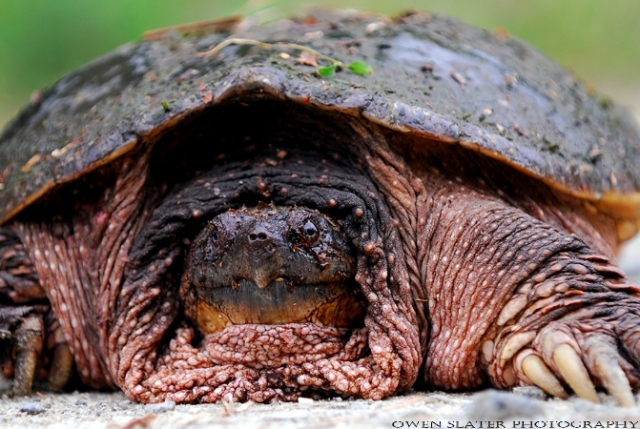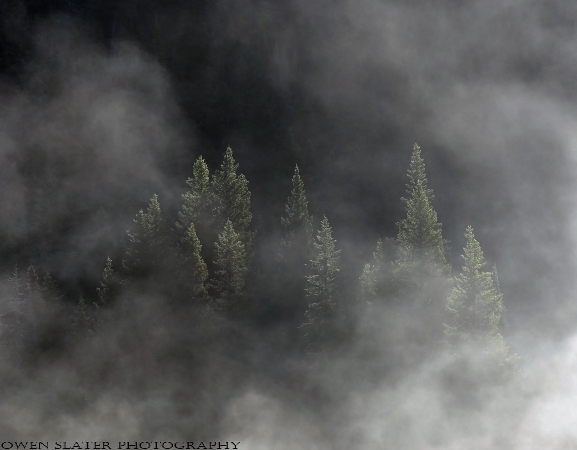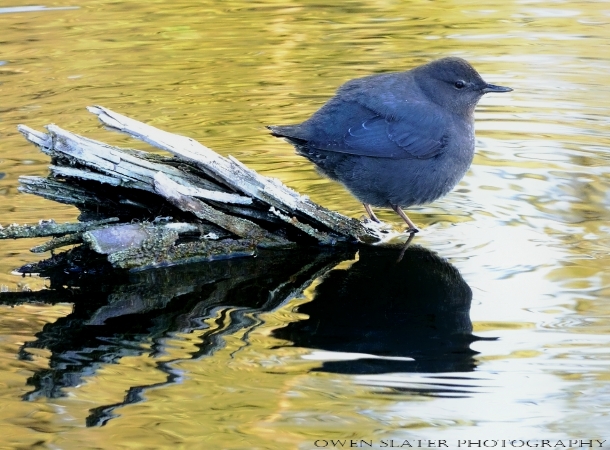These regal looking ungulates are called Topi. They can often be spotted in the African savannah standing on top of termite mounds or other small hills. This female jumped her way past me during a thunderstorm with her newly born calf trying hard to keep up. Please click on the image for the full size version.
Archive for February, 2013
 No doubt the true origins of the idea behind the energy drink came centuries ago when our ancestors were chased through the African savannah trying to escape these buffalo! On foot you would have to develop wings from the adrenaline surge to have any chance of escape! African buffalo are notoriously territorial and will readily stampede if threatened.
No doubt the true origins of the idea behind the energy drink came centuries ago when our ancestors were chased through the African savannah trying to escape these buffalo! On foot you would have to develop wings from the adrenaline surge to have any chance of escape! African buffalo are notoriously territorial and will readily stampede if threatened.
This week I was reliving some memories of my last trip to Africa and came across several photos that I overlooked. This is one that I’m glad I rediscovered. A few more to come soon!
They may not be considered pretty by many but no one can argue that they are adaptable. Snapping turtle ancestors date back some 40 million years! On the other hand human ancestors have only been around as a species for about 200,000 years. Which begs the question, would snapping turtles prefer living with dinosaurs over living with humans?
As human induced climate change continues they will need to continue to adapt or face extinction. The gender of snapping turtles and several egg laying reptiles is determined by the temperature the eggs are incubated at. Female will develop at colder temperatures and males at higher temperatures. Only a few degrees of difference is needed to change the sex of the soon to be hatched eggs, but if global warming continues these reptiles will have to modify their nesting behaviours if they are going to survive.
In this photo, a female was on the move to try to find a good spot to lay her eggs. After taking this photo I carefully lifted her up to avoid being bitten and took her across the road to make sure she made it safely. Everyone needs a helping hand once in a while and now more than ever wildlife needs ours!
The New Year has not resulted in a slow down in my opportunistic backyard wildlife photography and in fact it seems to have picked up a bit! This time it was the largest cervid in North America to make an appearance and while the photo isn’t great, it is was more to document the sighting than anything!
I was enjoying the beautiful morning sunrise in Calgary while cooking breakfast when I looked out the kitchen window and noticed this cow and calf moose making their way down the path to the backyard pond! I immediately sprang into action, racing around the house throwing on warm clothes and my boots while grabbing my camera and coat hoping they would still be there when I got out the back door. Sure enough, they had stopped where I last saw them to nibble on some shoots. I walked down the small hill to the pond and managed to snap off a few photos before the mother got spooked by something and trotted across the frozen pond with her calf in tow. By this point, several cars and pedestrians had stopped along the road to take in the rare event. As everyone looked on, the moose made their way up the bank and down the sidewalk ignoring the backlog of traffic before disappearing out of sight.
Every year a few moose end up in Calgary. They make their way into the city by travelling along rivers and park systems. Thankfully, these two appeared to know their way around the neighbourhood and successfully navigated all the city traffic, houses and pedestrians on their way to more suitable habitat on the outskirts of town. Those that wander too far into the city require ‘assistance’ from the local Fish and Wildlife officers, who sometimes need to sedate and move the moose if they get stuck in someone’s backyard or wander into the downtown core.
It will be hard to top this latest backyard wildlife sighting but it left me wondering what wildlife will be next to show up at my doorstep?
Fast forward to last week for this image (please click on the photo for the larger version).
For anyone that has had the privilege of seeing wild wolves in their natural environment, you can appreciate how fleeting the glimpses usually are. Often times they are visible for only a few seconds, usually in poor light with something obstructing the view. In these situations I often won’t even bother trying to take pictures. I will just watch them from a distance and enjoy the moment before they vanish into the forest.
Last week I was having a very unproductive morning with no good wildlife sightings to speak of so I decided to start heading back to town. I rounded a corner and my luck drastically changed. There, basking in the mid-day sun were three wolves! It is very rare to see them during the day and for them to be lying out in the open is exceptionally rare! I quickly pulled my car over to the side of the road, rolled down the window and turned the engine off in the hopes that I wouldn’t disturb them. Thankfully, within seconds they relaxed and went back to lounging in the sun!
To me nothing is more rewarding when watching wildlife then to have them be seemingly unaffected by my presence. I think this should be the gold standard for anyone that wants to watch or photograph wildlife. Sometimes it doesn’t happen, but if an effort is made to make this the first priority then it will occur a lot more often than not. In this case by keeping my distance, staying in the car and making as little movement or noise as possible I was able to watch them undisturbed for several minutes. One walked down the hill right in front of me while these two stayed on the ridge above. The two on the hill would periodically lift their heads to check on the other wolf below. The most amazing moment that illustrated that they weren’t concerned with me in the least was when they laid their heads down and closed their eyes for a few moments. To me this was the ultimate compliment.
You might be wondering how it all ended? I wish I could tell you that I left the wolves were I found them but unfortunately as is all too common these days a vehicle came around the corner, stopped behind me and the person got out of their car. In a split second the wolves on the hill leaped up, swirled around and vanished into the trees while the one of the road bolted up the hill and out of sight. Frustrating to say the least but hopefully the wolves were able to find a more secluded sunny spot to rest in for the remainder of the afternoon.
Let’s continue to ease back into the winter photography. Here is one from my bank of images taken in the summer.
The predator and prey roles are reversed when a ‘pack’ of hungry mosquitoes descends down on a wolf. They are mostly kept at bay by the thick coat, but just like when a wolf goes in for a kill, the mosquitoes hone in on the most vulnerable spots where their prey is less likely to be able to defend itself.
The wolf didn’t seem to be too bothered. I on the other hand was cursing at them under my breath. The welts that I soon developed and the itching that happened for days afterwards was a small price to pay.
It almost makes me appreciate the long mosquito free winters. Almost!
Just like people who need a break from living in the snow and cold, I figure my blog needs a break from the same! Here is a photo from a recent trip down to sunny, warm southern California! The sunset was spectacular that night. From surfers to people combing the beach for hidden treasures, everyone seemed to stop and take in the amazing colours.
An American Dipper takes a break from hunting to fluff its feathers. Birds will do this for a variety of reasons. In this case the dipper purposely fluffed the feathers to trap air between the different layers. This serves two main functions. One is to keep the warm air close to the body to maintain its body temperature and the other is to get enough air between the feathers to improve buoyancy when diving for food. By doing so, it easily floats back to the surface with minimal effort despite being weighed down by whatever food it manages to catch. A sick bird will also appear fluffed but this is accompanied by other signs such as lethargy, decreased alertness such as closing of the eyelids and usually thin body condition. As for the photo, it is one of my favourites because of the soft yellow tinge to the water created by the setting sun and the way the bird’s tail feathers match the angle and pattern of the splintered bark.











